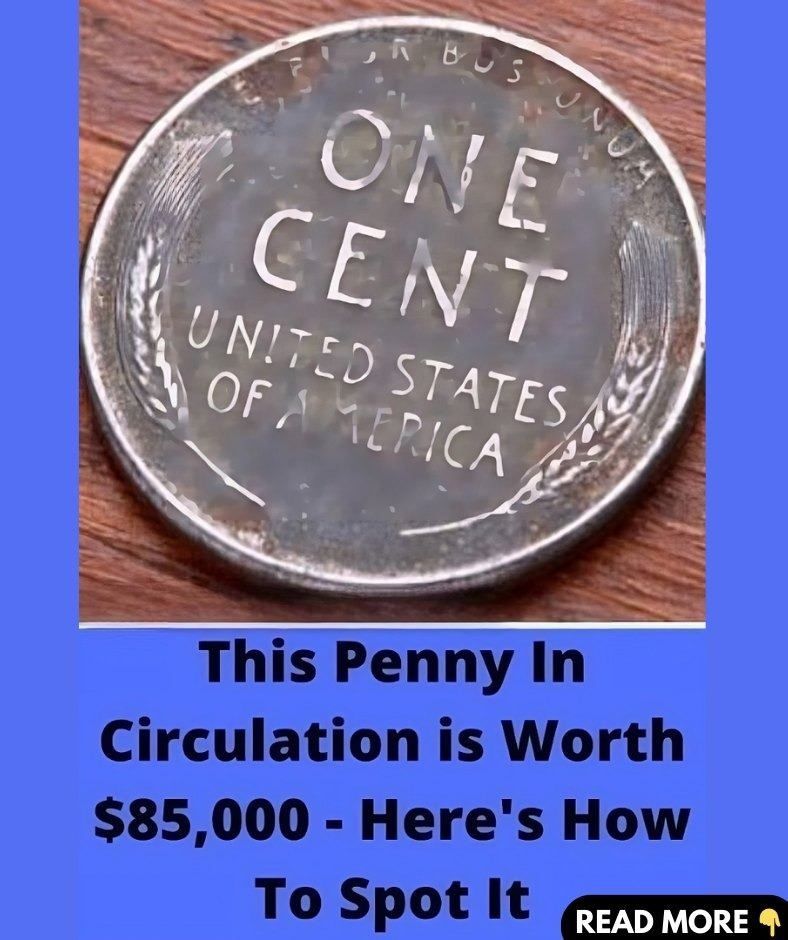ADVERTISEMENT
Here’s what you need to check:
1. The Date: First, look at the year on the penny. A genuine 1943 copper wheat penny will be dated “1943.” Be cautious of altered coins—fraudsters will sometimes file down the left side of the “8” on a 1948 penny to make it look like a 1943.
2. The Material: The 1943 penny was meant to be made of steel, so if your penny is magnetic, it’s not copper. Test the coin with a magnet. A genuine copper penny will not stick to the magnet, while a steel penny (even one that has been coated with copper) will.
3. The Color: Copper pennies have a distinctive reddish-brown color, unlike the silver-colored steel pennies from 1943. If your penny appears copper and passes the magnet test, it could be the real deal.
Beware of Counterfeit 1943 Copper Pennies
As with anything valuable, counterfeit versions of the 1943 copper penny are common. Fraudsters use several techniques to make fake 1943 copper pennies, so it’s important to know what to look for.
One common trick is to take a regular 1948 copper penny and modify the date. As mentioned earlier, some people file down the left side of the “8” in “1948” to make it look like a “3.” Another method is to take a 1943 steel penny and coat it with copper, creating a convincing but fake version of the valuable penny.
To avoid falling victim to these scams, always test the penny with a magnet. A steel penny coated with copper will stick to the magnet, while a genuine copper penny will not. Additionally, if you’re serious about verifying the authenticity of the coin, consider consulting a professional coin dealer or a grading service like the Professional Coin Grading Service (PCGS) or Numismatic Guaranty Corporation (NGC). These experts can help you confirm whether your penny is real and assess its condition for an accurate valuation.
The Value of a Mint-Condition Penny
If you’re lucky enough to find a genuine 1943 copper wheat penny, its condition will significantly impact its value. A penny in mint condition, meaning it shows no signs of wear or damage, could be worth more than $85,000! However, even if your penny isn’t in perfect condition, it can still fetch a high price. According to Coin Trackers, even lesser-quality 1943 copper pennies have sold for an average of $60,000.
Collectors are willing to pay a premium for these coins, and their value has only increased over time. The combination of historical significance, rarity, and the allure of owning a coin that was never meant to exist drives up demand—and, consequently, the price.
Where to Find 1943 Copper Pennies
Now that you know what to look for, where can you find one of these rare pennies? It’s unlikely you’ll stumble upon one in your pocket change, but if you have old coin collections or jars of pennies passed down through the family, it’s worth taking a closer look. Some collectors have found these rare pennies hidden among old coins that have been sitting around for years.
You might also find 1943 copper pennies at coin shows, estate sales, or auctions. However, always be cautious when buying from sellers, as counterfeit coins are common. If you’re purchasing a rare coin, make sure the seller is reputable and offers certification of authenticity.
Conclusion: Check Your Coins for Hidden Treasures
The 1943 copper wheat penny is a rare and valuable piece of American history, and finding one could be your ticket to a significant windfall. With values reaching over $85,000 for mint-condition coins, it’s well worth checking your coin collections to see if you have one of these hidden gems.
Remember to follow the identification tips—check the date, test the material with a magnet, and consult an expert if needed. Whether you’re a seasoned coin collector or just someone with a jar of old pennies, you never know what treasures might be waiting to be discovered. So go ahead, dig through those old coin jars, and you might just find a penny worth a fortune!
